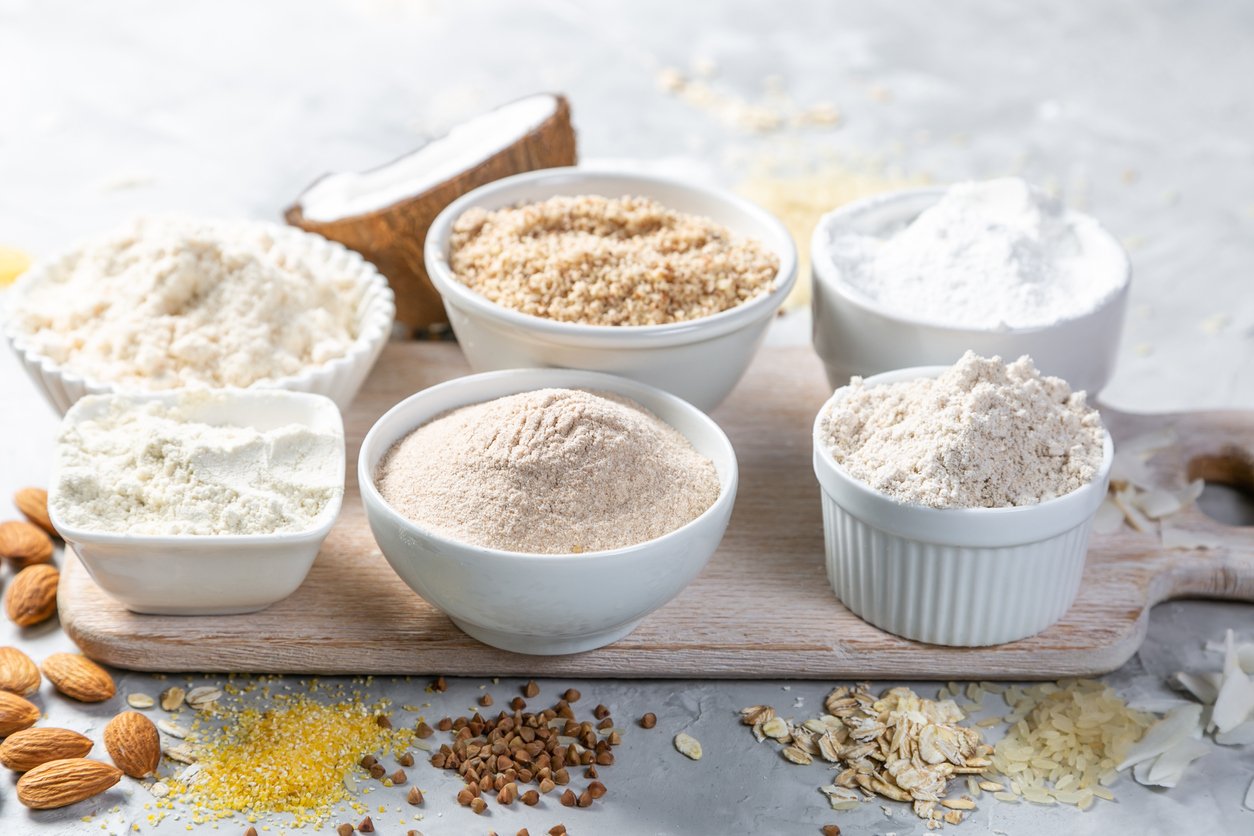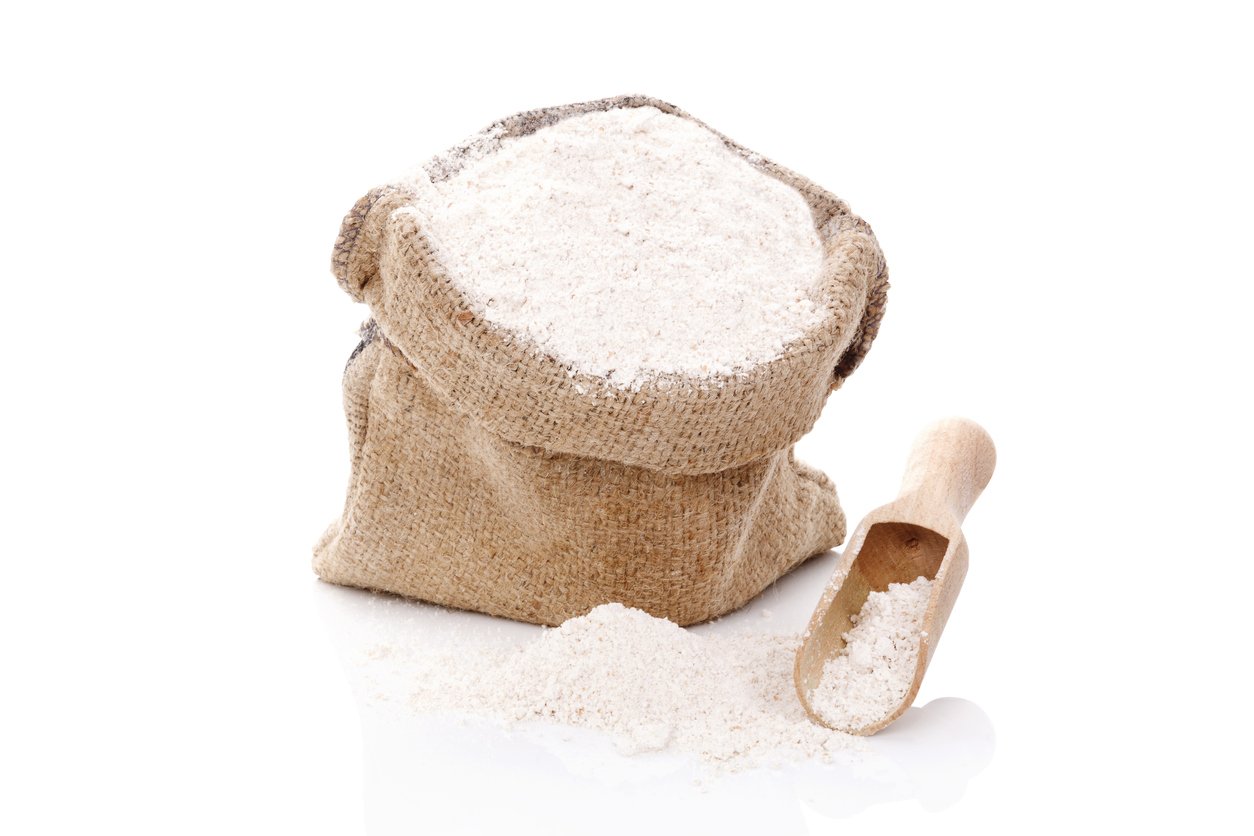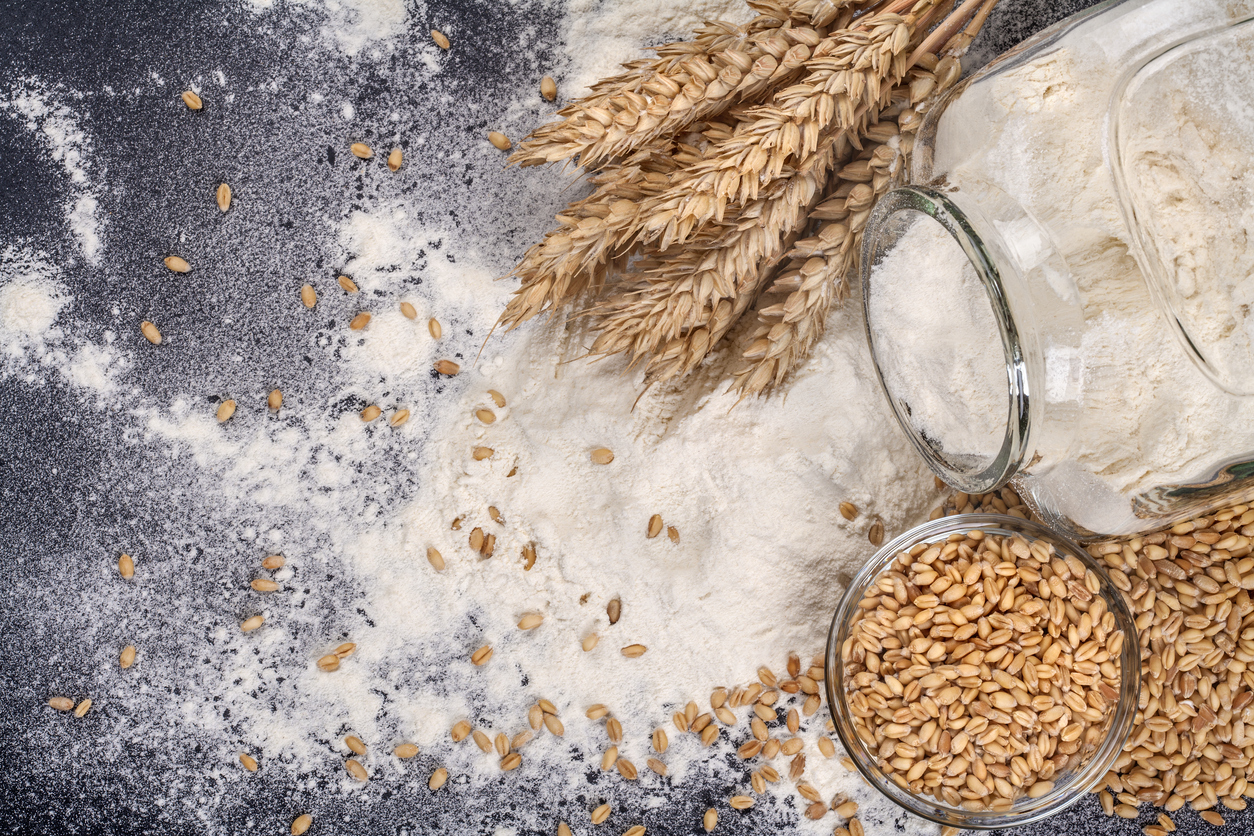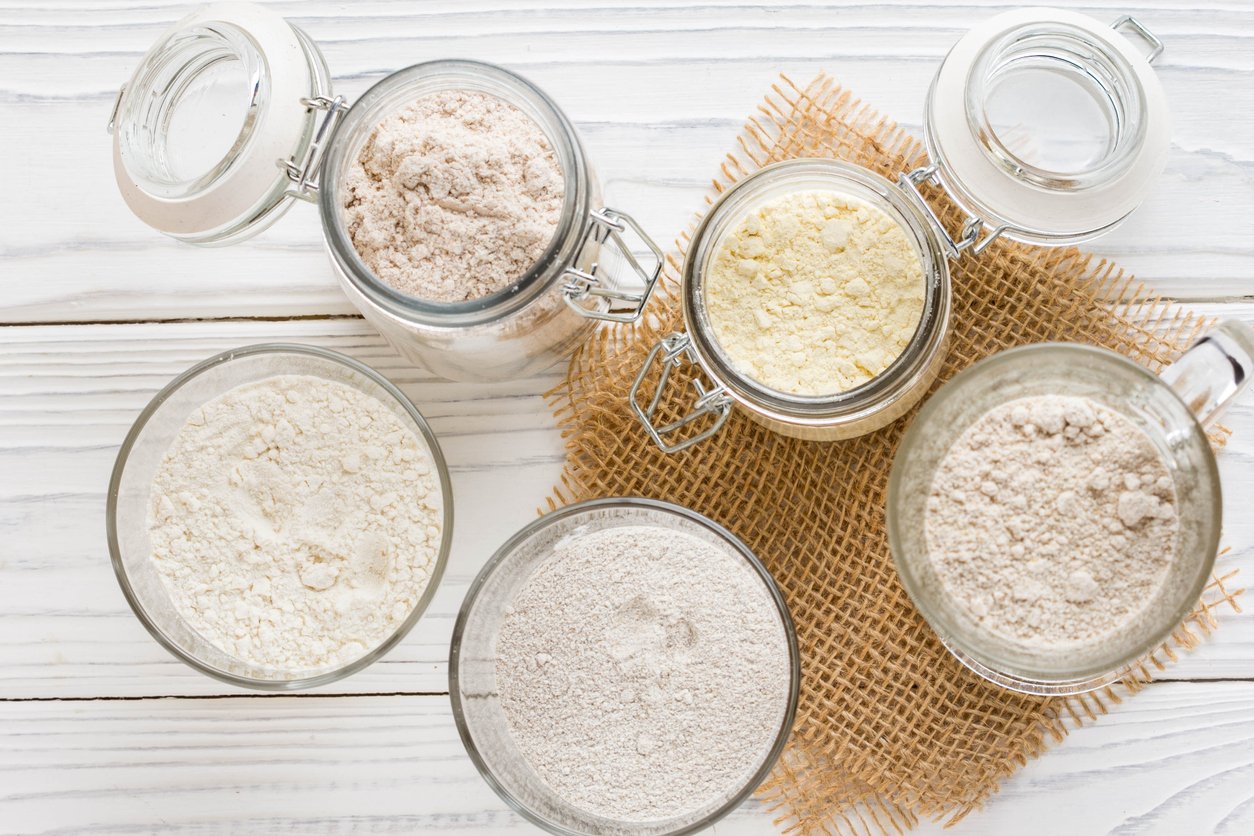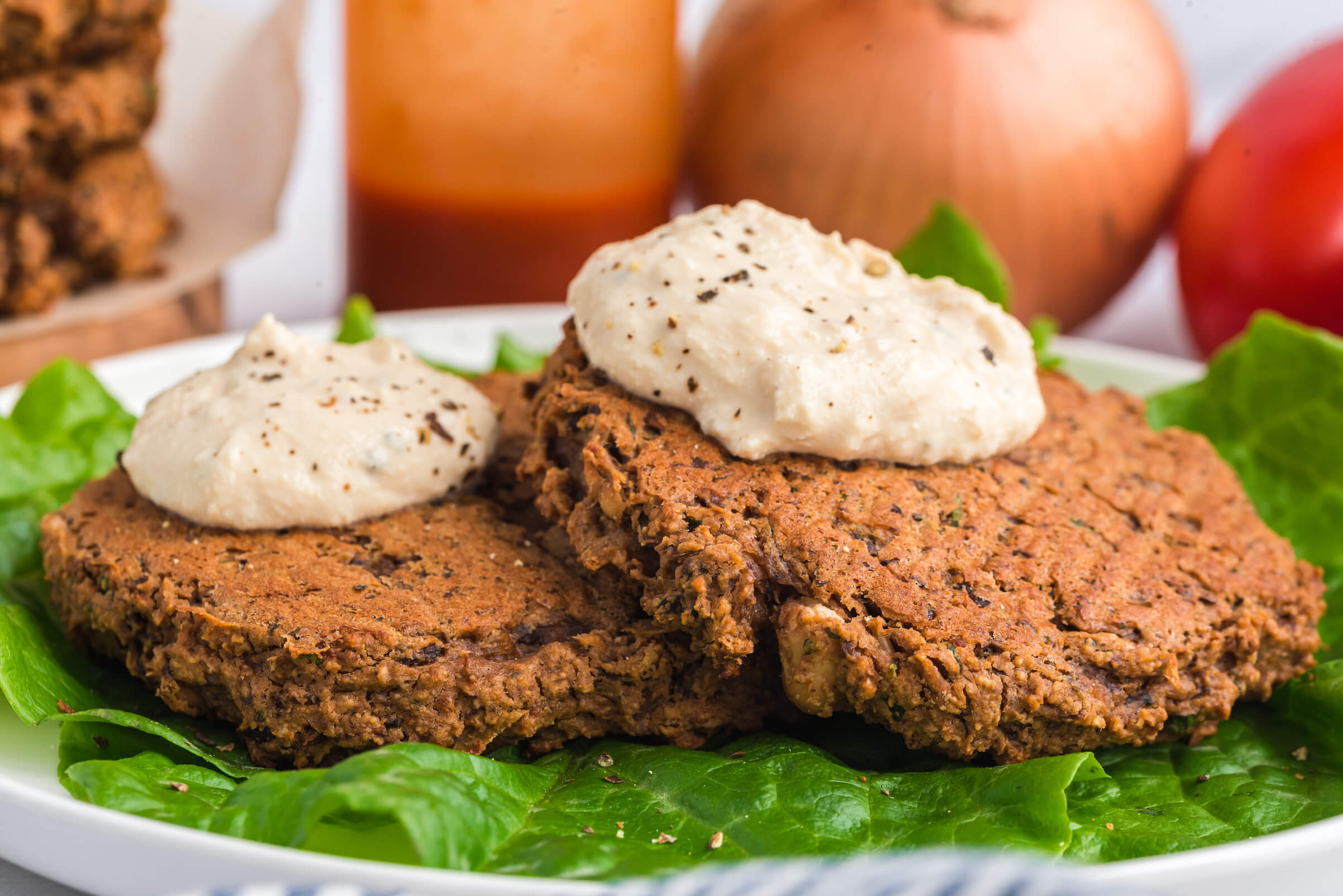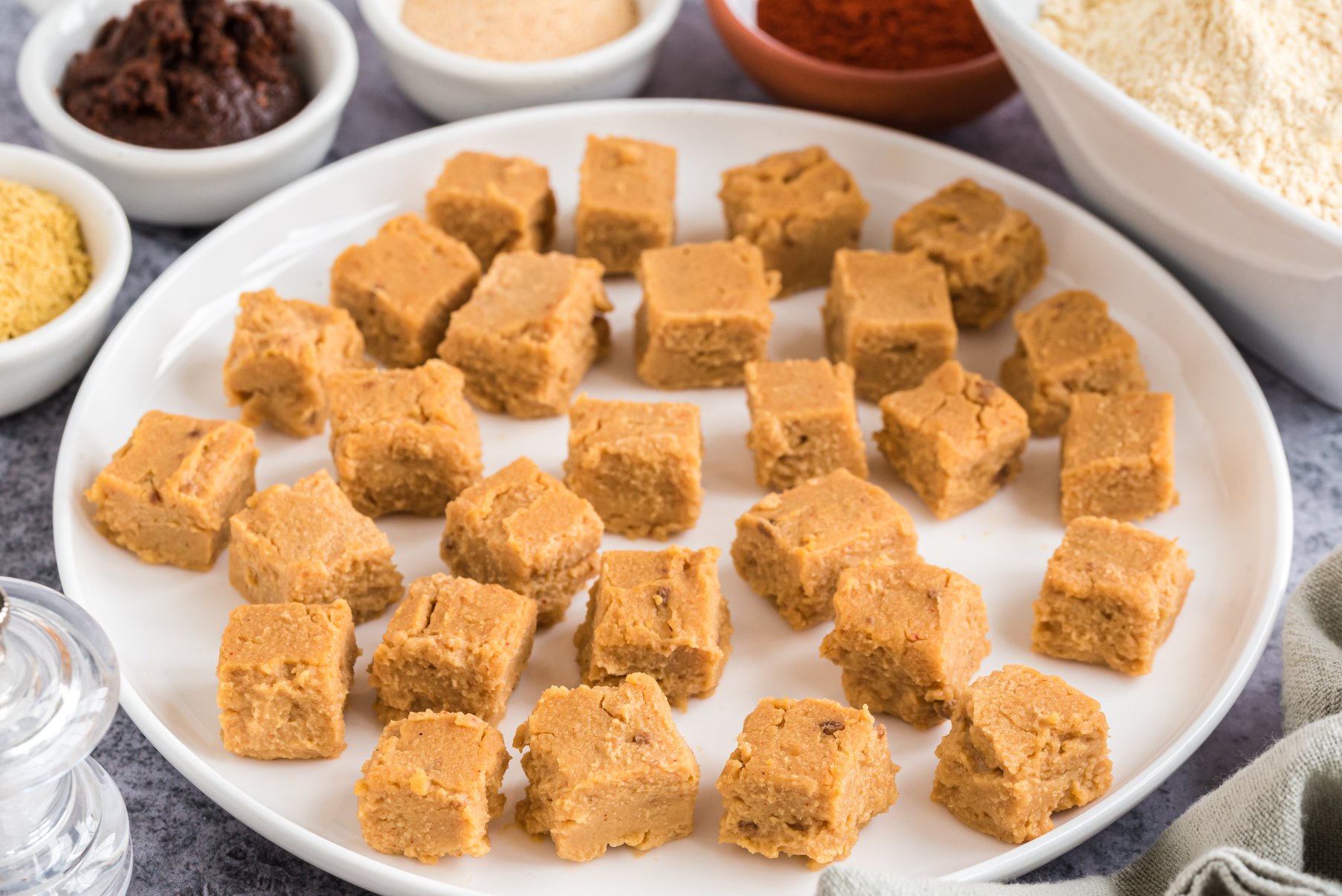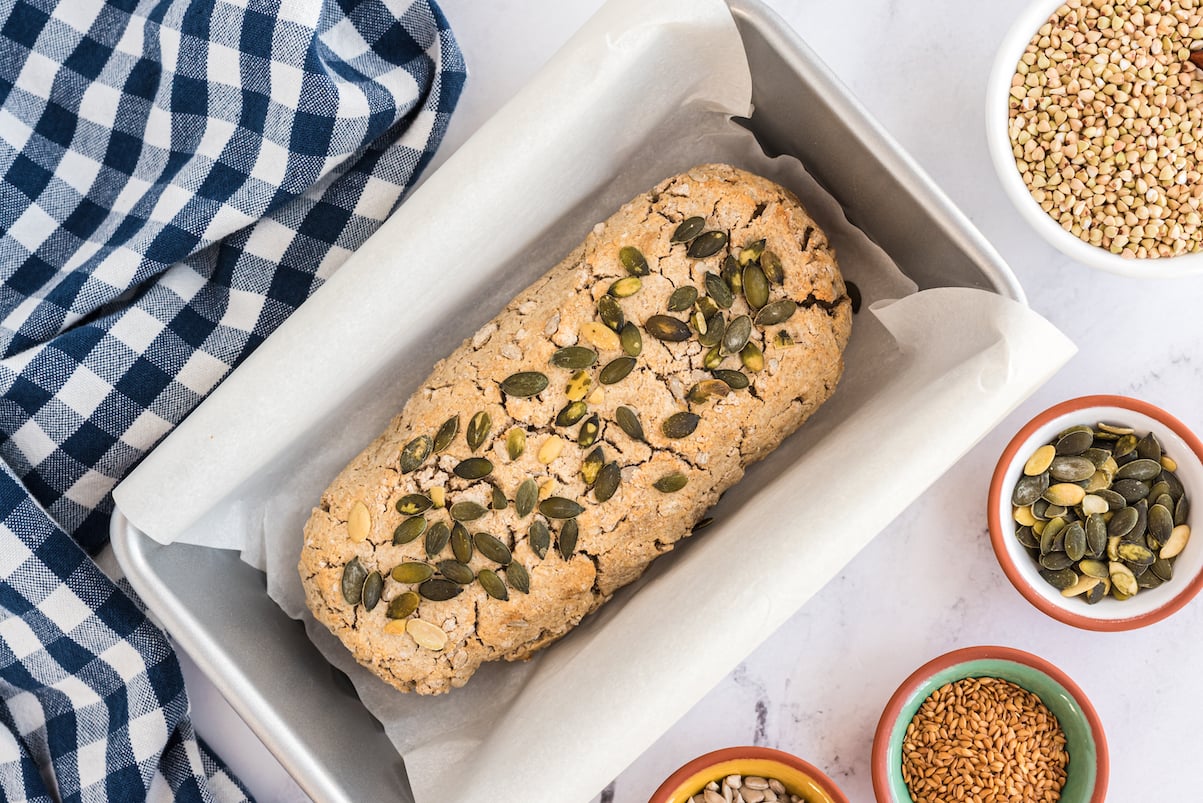Some archeological evidence suggests that our Paleolithic ancestors’ teeth may not have lasted a lifetime. In a world without blenders, this meant that getting enough calories and nutrients might have become more and more challenging as people got older. One solution was to outsource some of the work that teeth did to external tools and processes. And one of the most important of these technologies was milling grains into a softer substance called flour.
An ancient stone recovered in 2015 from a cave in southern Italy convinced researchers that humans have been grinding grains by hand for at least 32,000 years. Analysis of the stone revealed oat, acorn, and millet residue, some of which had been heated before grinding, probably to increase shelf life (or “stalagmite life” in their case).
It’s impossible to know what these ancient millers did with the flour so produced, but it’s not a stretch to imagine that they mixed it with water and cooked it into porridge or baked it into hard cakes.
As agriculture advanced and grains were domesticated, the art of milling became widespread. Historians credit the Romans with being among the first people to have perfected the milling of wheat into flour. The ancient Egyptians used sieves to sift out the bran and germ to produce white flour, which, due to its light texture and higher price, became a luxury good for the elites.
And for a long time, the history of milling technology was about innovations in scale: from a single handheld grinding stone to large stones rotated by humans; then, domesticated animals, and then water- and wind-powered mills. These methods have little in common with the highly industrialized process that produces the majority of modern-day flour.
Given that flour is, by definition, a processed food, albeit one with an ancient pedigree, should we be eating or avoiding it? And are some flours better or worse than others? In this article, we’ll answer the question “Is flour healthy?” examine the health consequences of flour, and see whether some kinds are better for you than others.
The Trouble with Most Flour
When I talk about modern flour, I’m mainly talking about flour made from a single genus, triticum, aka wheat. And the vast majority of wheat flour has three strikes against it: the removal of important nutrients, the addition of potentially harmful bleaching agents, and in most cases, end products with other highly processed and unhealthy ingredients.
Fiber and Nutrients Removed
White and other highly refined flours are made by stripping away the nutrient-rich bran (outer layer) and germ (seed embryo), leaving just the soft endosperm (the starch that nourishes the germ as it grows). Flour refined in this way contains not just less protein, but also less fiber and far fewer vitamins and minerals than the whole grain.
Flour manufacturers often attempt to redress the losses by enriching the finished product — adding a handful of synthetic nutrients to it after the flour is fully ground, and creating what the industry calls “enriched flour.” If there were a contest for “world’s most misleading name”, enriched flour would have a strong case for victory. After all, “enriched” sounds like it is better than the original. In reality, “flour that’s been stripped of most of its vitamins and minerals and fiber — but hey, a few synthetic nutrients were added back” would be my suggestion for a more accurate title. But I seriously doubt the industry will ever take my advice. Alas, my future in the field of processed food marketing isn’t looking too bright.
To be fair, some of these synthetic nutrients (which include thiamine, niacin, folic acid, riboflavin, and iron) might be helpful, at least compared to white flour that didn’t have them added — especially for a person who is deficient in a particular nutrient. Other nutrients probably don’t make much of a difference one way or another. Just like other forms of supplementation, enriched foods like flour are not an adequate substitute for getting most of your nutrients from whole foods. Foods fortified with folic acid, on the other hand, can be a problem — people can consume and absorb too much of it, possibly increasing their risk of cancer.
Bleached Flour
Many commercial white flours are bright white with such a soft texture thanks to a bleaching process. There are several commonly used bleaching agents, including chlorine gas, chlorine dioxide, nitrogen dioxide, calcium and benzoyl peroxides, and the ominously named azodicarbonamide. This last can break down into semicarbazide and urethane, both known carcinogens.
Chlorine is also problematic. One study found that cells exposed to a particular chlorine molecule, sodium hypochlorite, experienced “chromosomal aberration, micronuclei frequency, necrotic cells, apoptotic cells, and binucleated cells,” which roughly translates as DNA damage, dead cells, cells that are trying to die, and mutant cells with two nuclei (typically found in cancerous tissue).
Also, if you grew up watching TV aimed at teens, just about every other ad was for some new miracle acne cure that typically featured bacteria-killing benzoyl peroxide. I don’t know about you, but there’s something unsettling about treating bread and pimples with the same stuff.
I’m not the only one concerned about this stuff, either; the European Union, Canada, the UK, and China all have bans on bleaching agents. But they are used routinely in the US, which makes me wonder why the US so often seems to put the profits of processed food companies ahead of public health.
Used in Processed Foods
In addition to the inherently health-compromising qualities of white flour, it’s also implicated by the company it keeps in many of the most intensively processed foods on the market: cookies, crackers, chips, cakes, and other baked goods. In addition to featuring refined grain flours, these foods often also contain added sugar, sodium, food additives, and even harmful ingredients banned in countries outside the US.
Additionally, these foods are often highly addictive, especially when they contain excess sugar, sodium, and unhealthy fats like processed vegetable oils and dairy fats.
High Surface Area Leads to Rapid Absorption
The carbohydrates in flour are absorbed into the bloodstream much faster than they would be if you were eating the whole grain. This is because grinding grain into flour increases the surface area exponentially. For a visual, consider how fast a pile of chipped ice would melt on a hot sidewalk compared to a big block of ice.
This, in turn, causes more rapid digestion, which can lead to blood sugar spikes and big bursts of dopamine, a key factor in determining the addictive potential of a substance or behavior. Elevated glucose levels are linked to the activation of areas of the brain involved in addiction.
Rapid absorption applies not just to white flour, but all flours to some extent, even those that contain the whole grain. And it’s a key reason why foods made with flour may not be the best choice for people high on the food addiction susceptibility scale. In fact, what is probably the most successful weight loss program in the world, Bright Line Eating, urges abstinence from all flour products for this very reason.
Refined Grains’ Impact on Health
In 2010, researchers analyzed data from the long-running Framingham Heart Study and discovered that eating refined grains rather than whole grains was associated with a significant increase in visceral adipose tissue (the fat that surrounds your organs and is associated with worse health outcomes than the “belly fat” visible when you remove your shirt).
A study of almost 120,000 Chinese adults found a significant correlation between the consumption of refined grains (in this case, mostly white rice, but also including refined wheat products) and increased risk of cardiovascular disease.
Danish researchers (from Denmark, not studying breakfast pastries) found in 2017 that children were more likely to be overweight or obese at seven years old if their mothers experienced gestational diabetes and ate a lot of foods made from refined flour while pregnant.
And there’s increasing scientific consensus that people with type 2 diabetes, or at risk of developing it, should avoid refined sugars and grains to keep the progression of the condition at bay.
The Pros and Cons of 24 Types of Flour
Not all flours are created equal. Different grains and processing methods can yield flours that have different culinary properties and effects on human health. Let’s look at some more and less common flours to see which ones might have a place in your healthy diet.
Wheat Flours
Unless you go out of your way, most flour that you’ll find comes from a single Triticum species, T. aestivum. If you’re gluten-free, either because you have celiac disease, gluten intolerance, or another gluten-sensitive health condition, you’ll want to avoid all flour made from wheat.
Wheat flours, unless they’re certified organic, may also contain glyphosate or other pesticides.
If you’re concerned about bleaching, read the packaging, as white flour comes in bleached and unbleached varieties.
There are many types of wheat flours, differing largely based on the variety of wheat and its protein content. Bread flour has the highest concentration of protein, which allows it to stretch and rise into a firm loaf. Cake and pastry flour are made from softer varieties of wheat, allowing them to produce crumbly and light baked goods. All-purpose flour is a “split the difference” hybrid, which does a passable job in both cases.
Self-rising flour is a convenience product that typically includes baking powder and salt. It’s often used for fluffy biscuits particular to the cuisine of the US South. Fun fact: The British equivalent, self-raising flour, apparently doesn’t contain salt.
Type 00 flour is the most finely ground wheat flour, and is prized for Italian specialties such as pizza dough, pasta, and fresh gnocchi.
Whole wheat flours also vary widely, and may include less common varieties of wheat, such as durum, spelt, and emmer, as well as added sorghum flour.
Other Whole Grain Flours
In our increasingly sophisticated food culture, more and more formerly obscure products are getting their days in the sun. These include flours made from whole grains other than wheat like the following:
- Barley and rye flour (both of which contain gluten)
- Oat flour
- Amaranth flour
- Rice flour
- Buckwheat flour (which, despite the “wheat” in its name, is gluten-free)
- Corn flour
- Millet flour
- Teff flour (famous for the tangy, stretchy wraps that also serve as plates and napkins in traditional Ethiopian cuisine)
- Quinoa flour
While there are drawbacks to using flours of any kind (compared to eating a food in a more intact state), whole grains, in general, offer compelling nutritional advantages, and most of these are still present in whole grain flour.
For guidance on using these flours in your cooking and baking, check out this comprehensive article. And, if you need to avoid gluten, then choosing certified gluten-free flour is essential, even if a grain is naturally free of it, due to the risk of cross-contamination during processing.
When it comes to flour, grains aren’t the only game in town. Pretty much any food you can dry, you can grind into flour. Legume flours, like those made from chickpeas and lentils, have risen to prominence in gluten-free pasta. And thanks to their high fiber content, they can even be Bright Line Eating-friendly. If you can’t find them where you shop, a high-powered blender or even a spice or coffee grinder can turn chickpeas or lentils into fine flour in under a minute.
Some fruits and vegetables can also be dried and turned into flour. These include tapioca, potato, cassava, and coconut.
And nuts and seeds also produce some useful flours that are gluten-free and contain the whole food. Examples include chia, almond, and hazelnut flour.
Recipes Using Healthier Flours
While flour isn’t for everyone, many folks enjoy including it as part of a healthy, diverse, and plant-based diet. Certain types of flour, used judiciously and in moderation, can help create delicious and nutritious plant-based dishes.
Small quantities of flour can serve as a binding agent for plant-based burgers and fritters. Flour can be part of a coating or breading for tofu or air-fried veggies. Fermented bread such as sourdough undergoes a process that renders it healthier than standard bread; it can even nourish the beneficial bacteria in your gut. And for many people, products made with flour can serve as a delicious occasional treat without ill effects.
If you want some fun with healthy(er) flours, grab your chef’s hat and apron, and get ready to have some wholesome, plant-based fun in the kitchen! Here are three recipes to spark your creativity in incorporating various flours in unconventional ways. Bon appetit!
1. White Bean and Mushroom Burgers
Veggie burgers require a few staple ingredients to give them their signature chewy and hearty texture, one of which is oat flour. Its mild flavor, when paired with savory ingredients, allows the herbs and spices to shine through. It also absorbs liquids, making it ideal for binding veggie burgers so they don’t fall apart on you. Since oats are dense and plump up once cooked (or soaked), they can balance the moisture level in the patty so that it’s not too moist and not too dry. They come out just right! In this plant-based burger, white beans, mushrooms, and oats come together in perfect harmony to make a burger that can stand up to the heat of the grill (or oven) and be piled high with all your favorite plant-based fixin’s without falling apart after just one bite.
2. Chipotle Cheese Chickpea Tofu
Chickpea flour, like many other grain- and legume-based flours, is a culinary chameleon, as evidenced by the variety of dishes where you can use it. In this case, we’re turning ground chickpeas into savory, cheesy, umami, and firm tofu cubes that make an excellent substitution for traditional soy-based tofu. Chipotle Cheese Chickpea Tofu is packed with plant protein and fiber and is also an abundant source of zinc, copper, manganese, and vitamin K. It also offers up a good amount of B vitamins, iron, magnesium, selenium, and choline, all of which are important to a healthy, plant-based diet. Try it in your favorite stir-fry, or make it crispy to enjoy alongside a delicious plant-based dip as a standout appetizer for family and friends.
3. Three-Seed Fermented Buckwheat Bread
Playing around with grain-based flours might just lead to a love affair after you try this deliciously moist and slightly tangy Three-Seed Fermented Buckwheat Bread. It takes a little patience while the fermentation does its magic, but the end result is absolutely worth the wait. Not only is this bread gluten-free since it’s made with buckwheat and brown rice flour, but it contains antioxidants, protein, fiber, and minerals for a hearty and nutrient-rich bread that is delicious in a variety of ways!
Conclusion: Flour Is not a Health Food
Humanity has a long history of using flour, out of necessity, convenience, and preference. But modern flour, especially from refined wheat, comes with a number of significant downsides. Some types of flour are more supportive of health than others, and these include legume, nut and seed, and whole grain flours. Unfortunately, they aren’t interchangeable, and some work better in certain recipes than others. But while flour is not an especially healthy food, for most of us, whole grain, nut, seed, or legume flours can still have a place in a balanced diet.
Tell us in the comments:
- How many different types of flour do you typically use in your kitchen?
- Have you ever made your own flour?
- What kind of flour are you curious about substituting for white wheat flour?
Featured Image: iStock.com/a_namenko
